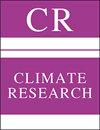Population responses to harvesting in fluctuating environments
IF 1.6
4区 地球科学
Q4 ENVIRONMENTAL SCIENCES
引用次数: 5
Abstract
: Achieving sustainable harvesting of natural populations depends on our ability to predict population responses to the combined effects of harvesting and environmental fluctuations while accounting for other internal and external factors that influence population dynamics in time and space. Here, we review recent research showing how spatial patterns and interspecific interactions can influence population responses to harvesting in fluctuating environments. We highlight several pathways through which harvesting can, often inadvertently, influence the dynamics and resilience to environmental fluctuations of both harvested and surrounding non-harvested populations and species. For instance, spatial models have shown that harvesting is expected to influence the spatial synchrony of population fluctuations, both of the harvested species and its competitors, predators and prey, with implications for population extinction risk. Dispersal and interspecific interactions can cause responses to harvesting in areas and species that are not themselves harvested. Harvesting that selectively targets certain groups of individuals, either intentionally or through for example spatially biased harvesting, can amplify environmentally induced population fluctuations by biasing the population structure towards individuals that are more sensitive to environmental variation. On the other hand, harvesting can in some cases buffer populations against the density-dependent effects of harsh climatic conditions, which are probably more common than previously acknowledged. Recent advances in modeling are providing new predictions that are highly re levant under global warming and now need to be tested empirically. We discuss how knowledge of these pathways can be used to increase the sustainability of harvesting.在波动的环境中,种群对收获的反应
*实现自然种群的可持续采伐,取决于我们是否有能力预测种群对采伐和环境波动的综合影响的反应,同时考虑到影响种群在时间和空间上动态的其他内部和外部因素。在这里,我们回顾了最近的研究,表明空间模式和种间相互作用如何影响种群对波动环境中收获的反应。我们强调了几种途径,通过这些途径,收获往往会无意中影响收获种群和周围未收获种群和物种的动态和对环境波动的适应能力。例如,空间模型表明,收获预计会影响种群波动的空间同步性,包括被收获物种及其竞争对手、捕食者和猎物,从而对种群灭绝风险产生影响。扩散和种间相互作用可引起对自身未被收获的地区和物种的收获的反应。有选择地以某些群体的个人为目标的收获,无论是有意还是通过例如空间偏差的收获,都可以通过使人口结构偏向对环境变化更敏感的个人,从而放大环境引起的人口波动。另一方面,在某些情况下,收获可以缓冲种群免受恶劣气候条件的密度依赖效应的影响,这种影响可能比以前认识到的更普遍。模型的最新进展提供了与全球变暖高度相关的新预测,现在需要进行经验检验。我们讨论了如何利用这些途径的知识来提高收获的可持续性。
本文章由计算机程序翻译,如有差异,请以英文原文为准。
求助全文
约1分钟内获得全文
求助全文
来源期刊

Climate Research
地学-环境科学
CiteScore
2.90
自引率
9.10%
发文量
25
审稿时长
3 months
期刊介绍:
Basic and applied research devoted to all aspects of climate – past, present and future. Investigation of the reciprocal influences between climate and organisms (including climate effects on individuals, populations, ecological communities and entire ecosystems), as well as between climate and human societies. CR invites high-quality Research Articles, Reviews, Notes and Comments/Reply Comments (see Clim Res 20:187), CR SPECIALS and Opinion Pieces. For details see the Guidelines for Authors. Papers may be concerned with:
-Interactions of climate with organisms, populations, ecosystems, and human societies
-Short- and long-term changes in climatic elements, such as humidity and precipitation, temperature, wind velocity and storms, radiation, carbon dioxide, trace gases, ozone, UV radiation
-Human reactions to climate change; health, morbidity and mortality; clothing and climate; indoor climate management
-Climate effects on biotic diversity. Paleoecology, species abundance and extinction, natural resources and water levels
-Historical case studies, including paleoecology and paleoclimatology
-Analysis of extreme climatic events, their physicochemical properties and their time–space dynamics. Climatic hazards
-Land-surface climatology. Soil degradation, deforestation, desertification
-Assessment and implementation of adaptations and response options
-Applications of climate models and modelled future climate scenarios. Methodology in model development and application
 求助内容:
求助内容: 应助结果提醒方式:
应助结果提醒方式:


